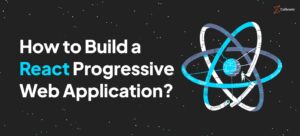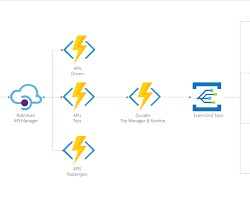
In the fast-paced world of web development, staying ahead means embracing cutting-edge technologies and methodologies. React, a JavaScript library for building user interfaces, has become a cornerstone of modern web development due to its flexibility, performance, and vast ecosystem of tools and libraries.
In this article, we’ll explore how React can be leveraged alongside serverless architecture and machine learning, while also taking advantage of advanced tools like TypeScript.
What is Serverless Architecture:
Serverless architecture has gained popularity for its scalability, cost-effectiveness, and ease of deployment. With serverless computing, developers can focus on writing code without worrying about managing servers. Services like AWS Lambda, Azure Functions, and Google Cloud Functions enable developers to run code in response to events without provisioning or managing servers.
Integrating serverless architecture with React allows for building highly scalable and dynamic applications. For example, you can use serverless functions to handle API requests, process data, and perform computationally intensive tasks, such as image recognition or natural language processing.
Let’s take a look at a simple example of integrating a serverless function with React using Netlify:
// React component making use of a serverless function
import React, { useState } from 'react';
const MyComponent = () => {
const [result, setResult] = useState(null);
const fetchData = async () => {
try {
const response = await fetch('/.netlify/functions/myFunction');
const data = await response.json();
setResult(data);
} catch (error) {
console.error('Error fetching data:', error);
}
};
return (
<div>
<button onClick={fetchData}>Fetch Data</button>
{result && <p>Data: {result}</p>}
</div>
);
};
export default MyComponent;
AI & Machine Learning revolution.
Machine learning (ML) has revolutionized various industries by enabling computers to learn from data and make predictions or decisions. Integrating machine learning models into React applications opens up a world of possibilities, from recommendation systems to predictive analytics.
Machine Learning in the browser.
Tools like TensorFlow.js and TensorFlow Serving allow developers to deploy machine learning models directly in the browser or as microservices, making it easier to incorporate ML into web applications. Additionally, serverless architecture can be utilized to deploy and scale machine learning models effortlessly.
Here’s a brief example demonstrating how you can integrate a simple ML model using TensorFlow.js with React:
// React component using TensorFlow.js for image classification
import React, { useState } from 'react';
import * as tf from '@tensorflow/tfjs';
const MyComponent = () => {
const [prediction, setPrediction] = useState('');
const classifyImage = async (event) => {
const file = event.target.files[0];
const img = new Image();
const reader = new FileReader();
reader.onload = async function () {
img.src = reader.result;
img.onload = async function () {
const model = await tf.loadLayersModel('model.json');
const tensorImg = tf.browser.fromPixels(img).resizeNearestNeighbor([224, 224]).toFloat();
const offset = tf.scalar(127.5);
const normalized = tensorImg.sub(offset).div(offset).expandDims();
const predictionResult = await model.predict(normalized).data();
const classLabels = ['Class A', 'Class B', 'Class C']; // Define your class labels here
const predictedClassIndex = predictionResult.indexOf(Math.max(...predictionResult));
setPrediction(classLabels[predictedClassIndex]);
};
};
reader.readAsDataURL(file);
};
return (
<div>
<input type="file" accept="image/*" onChange={classifyImage} />
{prediction && <p>Prediction: {prediction}</p>}
</div>
);
};
export default MyComponent;
Simplifying Deployment with Serverless Architecture.
Serverless architecture further simplifies the deployment and scaling of machine learning models within React applications. By utilizing serverless platforms like AWS Lambda or Google Cloud Functions, developers can deploy ML models as functions that automatically scale in response to incoming requests. This allows for more efficient resource utilization and reduces operational overhead.
Conclusion
By integrating serverless architecture with machine learning and advanced tools like Tensorflow.js, React developers can build powerful,scalable, and maintainable applications.Whether you’re building a simple web app or a sophisticated enterprise solution, leveraging these technologies can help you stay ahead in the ever-evolving landscape of web development.So,roll up your sleeves, experiment with these tools and unlock the full potential of React in your projects.
Happy coding!





